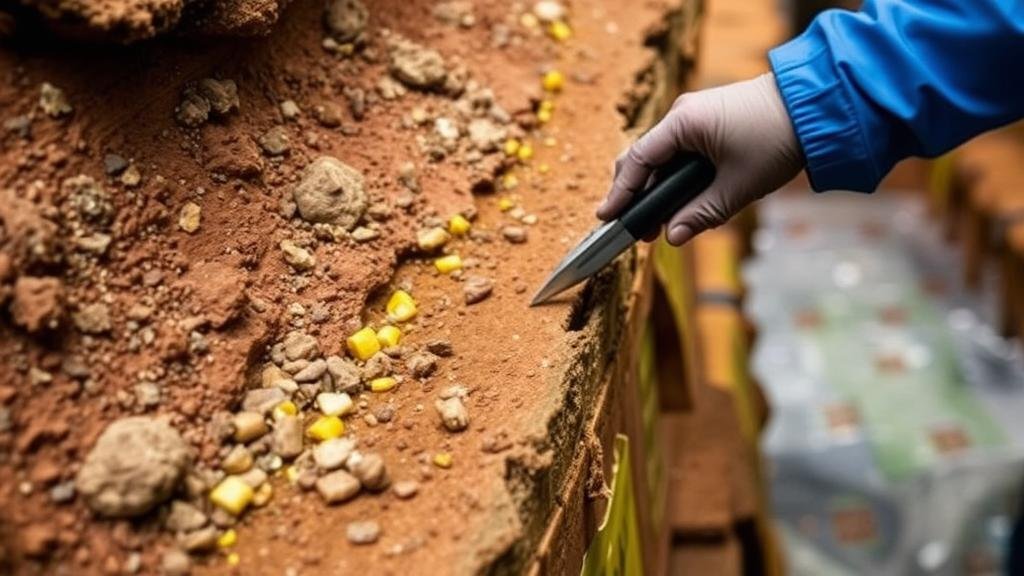Advanced Ore Sampling Techniques for Subsurface Deposit Prediction
Advanced Ore Sampling Techniques for Subsurface Deposit Prediction
In the realm of mineral exploration, effective sampling techniques are paramount for predicting the location and quality of subsurface deposits. Advanced ore sampling methods not only enhance accuracy in identifying potential mineral resources but also optimize the economic viability of mining operations. This article explores the latest techniques, their importance, and their applications in predicting subsurface mineral deposits.
The Importance of Ore Sampling
Ore sampling is a critical aspect of the exploration process, as it provides essential data for decision-making regarding further exploration and investment. Accurate data helps in:
- Assessing the quality and quantity of the mineral deposit
- Reducing financial risks in exploration
- Guiding the design of mining operations
Without reliable sampling techniques, exploration efforts can lead to significant economic losses and operational inefficiencies. So, advancements in sampling methodologies are crucial in the mining industry.
Types of Advanced Sampling Techniques
This section outlines some of the most effective advanced sampling techniques currently employed in the field.
1. Core Sampling
Core sampling involves extracting cylindrical sections of rock (cores) from the subsurface, allowing for detailed examination of mineralized zones. This method is often utilized in pre-feasibility studies, providing crucial information about the geology and mineral content of the deposit.
For example, the mining company Rio Tinto uses core sampling extensively in its exploration programs for locating copper and gold deposits. This technique allows them to assess not just the mineral quality but also the physical characteristics of the surrounding rock.
2. Geophysical Surveys
Geophysical surveys, such as magnetic and electromagnetic methods, allow for the indirect assessment of subsurface geology. e techniques can highlight anomalies that may indicate the presence of ore deposits.
A notable example is the use of airborne geophysical surveys by BHP Billiton, which improved their mineral exploration efficiency by identifying high-potential areas without the need for extensive drilling.
3. Bottom-Up Sampling
Bottom-up sampling is a relatively innovative approach that involves sampling from the deepest, most mineralized levels upward, rather than starting from the surface. This technique can yield valuable information about the stratigraphic layering and increase the accuracy of deposit prediction.
In a study carried out in the Goldfields region of Australia, this method revealed previously overlooked high-grade zones that were not apparent when using traditional surface sampling methods.
Integrating Technological Advances
The integration of technology into sampling techniques has enhanced accuracy and efficiency in predicting subsurface deposits. Some notable technological advancements include the use of:
- 3D modeling software for visualizing geological structures
- Field portable X-ray fluorescence (FPXRF) analyzers for real-time elemental analysis
- Drones for aerial surveys and sampling
For example, the use of FPXRF technology by Kinross Gold Corporation has allowed geologists to make informed decisions on-site regarding the continuation of drilling programs based on real-time data. This not only saves time but significantly reduces costs involved in sample analysis.
Challenges and Considerations
Despite the advancements, there are challenges associated with these techniques. Some of these include:
- Sensitivity of sampling methods to environmental conditions (e.g., soil moisture content)
- The need for extensive training of personnel in advanced techniques and technologies
- High initial costs associated with implementing new sampling technologies
Addressing these challenges requires careful planning and investment in education and technology to ensure that the advantages of advanced sampling techniques outweigh the drawbacks.
Conclusion and Actionable Takeaways
The landscape of mineral exploration and mining is evolving, necessitating the adoption of advanced ore sampling techniques for subsurface deposit prediction. By utilizing methods such as core sampling, geophysical surveys, and bottom-up sampling, companies can significantly improve their exploration outcomes.
To implement these techniques effectively:
- Invest in training for personnel on the latest sampling methodologies and technologies.
- Evaluate and adapt sampling strategies based on the geological context and environmental conditions.
- Embrace technological innovations to streamline operations and enhance data accuracy.
To wrap up, the strategic use of advanced sampling techniques not only increases the chances of discovering viable mineral deposits but also optimizes the overall efficiency of mineral exploration operations.



